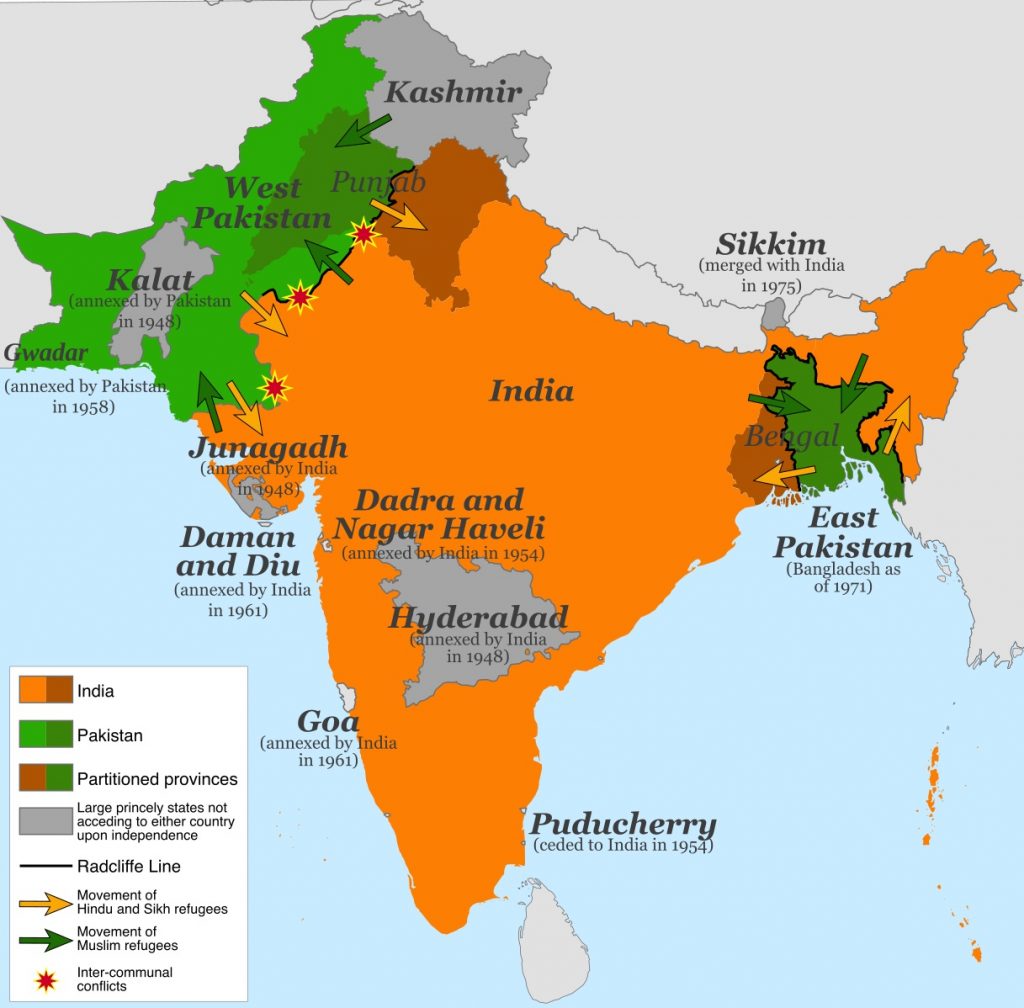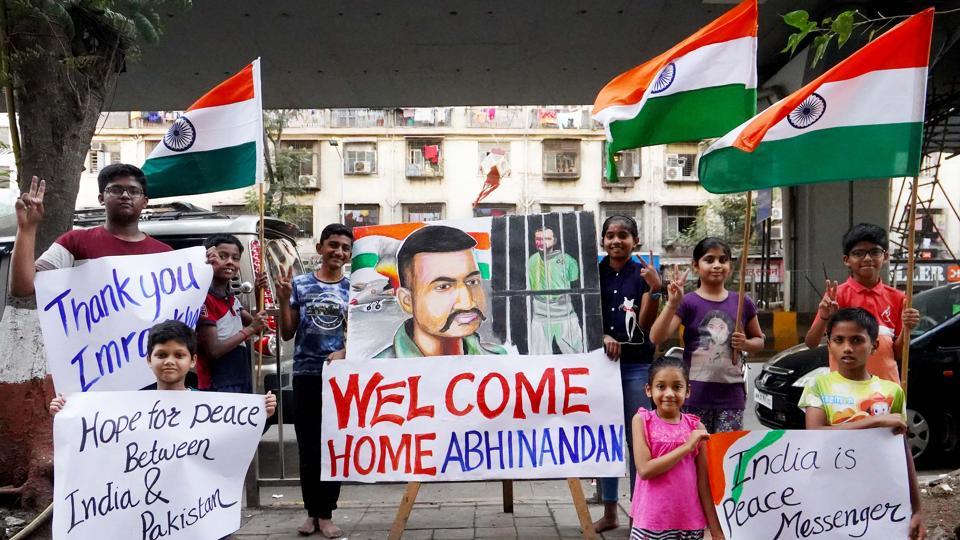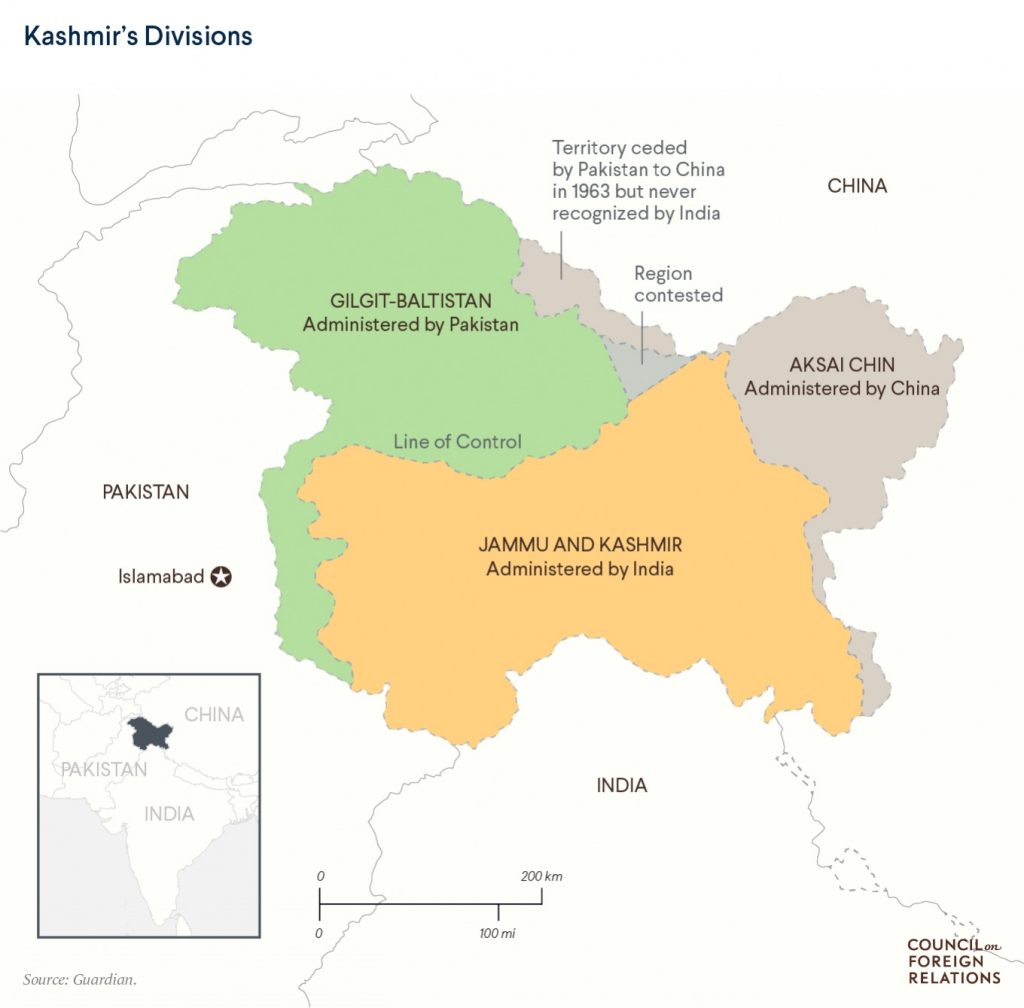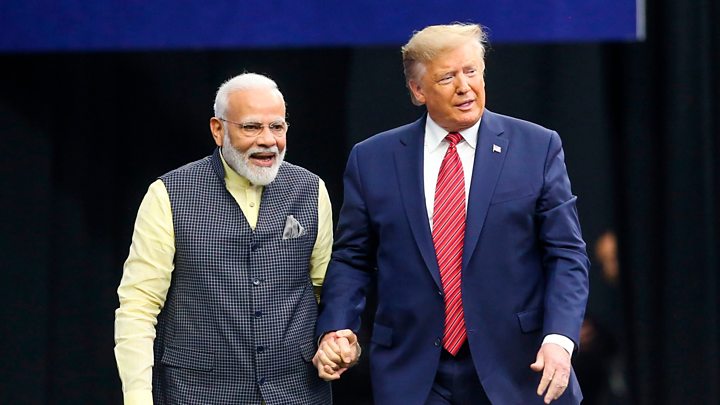Indian Prime Minister Narendra Modi has boasted that one needs a 56-inch chest to elicit fear in an enemy. While reports show Modi’s chest is only a mere 50 inches in circumference, the Indian leader flexed his strength differently on August 5th when he revoked Articles 370 and 35-A of the Indian Constitution. These articles provided special protections to the state of Jammu and Kashmir, a territory claimed by both India and Pakistan but administrated by India. Modi also plans to strip the region of statehood and take direct control over the territory. The Indian Prime Minister’s decision has inflamed tensions between the two already hostile nations. Pakistani Prime Minister Imran Khan has already warned that a blood bath is imminent. In order to avoid a catastrophically destructive conflict between two nuclear nations, the international community must pressure India to immediately restart back-channel discussions, de-escalate tensions with Pakistan, and empower the citizens of Kashmir.
A 70 Year Tiff
India and Pakistan have disputed Kashmir’s status since the two countries gained independence from Britain. After ruling India for about 90 years, Britain bowed out of the Indian subcontinent on August 15, 1947, giving way to three nations in an event known as Partition. West and East Pakistan (now Bangladesh) were created as safe-havens for Muslims. India (the third nation) was supposed to have no religious designation. Today, 80% of the population is Hindu, 13% is Muslim, and about 2% identify as Sikh. Pakistan, on the other hand, is 96% Muslim and only 4% Hindu, highlighting the religious polarization of the two countries.
After Partition, millions migrated between East Pakistan, West Pakistan, and India, attempting to reach the nation that espoused their religious beliefs. In the chaos, hundreds of thousands died because of religious violence led by tribalistic groups.

Source: Wikimedia Commons
From this backdrop of death emerged the Kashmir dispute. When Partition occurred, the Hindu Maharaja who ruled the princely state of Kashmir (a British semi-autonomous territory which was majority-Muslim) wanted to remain independent from the three countries. However, after Pakistan threatened to invade, the Maharaja joined India under certain conditions which were codified in Articles 370 and 35-A of the Indian Constitution.
While many of the articles’ assurances have faded away, such as Kashmir having its own Prime Minister, certain important protections have lasted until today. Article 370 gives the region more political autonomy than other states while Article 35A lets the Kashmiri government decide who can buy property or work in Kashmir, leading to only Kashmiris owning land. Article 35A also mandates that only permanent residents can own immovable property or be hired by Kashmir-based companies.
Conflict between India and Pakistan over Kashmir has been sporadic, yet ongoing in the 72 years since Partition. India and Pakistan have fought two wars over Kashmir in 1947 and 1965. Between 2016, and 2018, border fights killed dozens. However, one of the worst events was the Mumbai Attack, where a Pakistani backed militant group killed more than 160 people in a 2008 attack.
Rising Tensions
The latest batch of conflict between the two nations was triggered by a Kashmiri militant who ran a car filled with explosives into an Indian paramilitary truck in February; 40 troops were killed. Pakistan-based terrorist organization Jaish-e-Muhammad (JeM), a group that allegedly has ties to the Pakistani intelligence agency, claimed responsibility for the attack.
In response, India launched airstrikes targeting camps that they claim housed JeM members. Pakistan responded by shooting down an Indian plane and taking the pilot hostage. Pakistan eventually released the pilot, momentarily giving many hope that a new era of less confrontational actions between the two nations was ahead. Then, August 5th happened.
On that day, Prime Minister Modi revoked the two articles, arguing that his actions would stimulate development in Kashmir, but this seems to be a facade. India has fallen into an economic dip, causing discontent around the country. The unemployment rate is the highest it has been in 45 years while GDP growth has also slowed. Modi’s move seems to be an effort to rile up his Hindu-nationalist base to shift their focus from the economy.

Source: Hindustan Times
Chaos in Kashmir
India and Pakistan both occupy parts of Kashmir. India controls about 85,000 square miles of territory with Pakistan claiming 28,000 square miles. China also occupies a region known as Aksai-Chin which is about 14,500 square miles. India’s and Pakistan’s territories are divided by an unofficial border known as the Line of Control (LOC) which is covered with barbed wire, check-posts, and troops who occasionally send volleys towards the other side, keeping hostilities simmering.

Fig. 3: Control of Kashmir
Source: CFR
After revoking the two articles, India locked down Kashmir, deploying 38,000 troops into the region to prevent protests. The soldiers arrested prominent Kashmiri politicians, business people, activists, and lawyers. New Delhi also put in place a communications blackout, restricting internet, cell phone, and landline access. Indian authorities claim the region is not prepared for political activities, so it is unclear when the curfew will be lifted or when the democratic process will return.
New Delhi’s heavy-handed actions have stirred up underlying feelings of discontent among Kashmiris. Traditionally, young, educated men, struggling to find jobs have made up a large portion of protestors. Jammu and Kashmir had the highest unemployment rate of any Indian state between January 2016 and July 2019 at 15%, more than double the average Indian unemployment rate. Even more alarming is the unemployment rate of females which sat at 59.5%, up 43% from the national average, and the unemployment rate of youth (15-24-year-olds) which was 70% while the national average was 10%. To these disenfranchised youths, the soldiers’ actions represent the Indian government’s presence in Kashmir: callous, clumsy and simply ineffective. They believe India has not improved their economic or political situation, and their concerns generally ring true. Although Jammu and Kashmir ranks in the top half of Indian states in terms of poverty rate, a high unemployment rate combined with a GDP per capita that is 25th out of 33 Indian states do not paint a rosy picture of the state’s economy.
Moving Towards Peace
To reduce more calamitous conflict, the international community must first find ways to exert pressure on India and Pakistan. Pressure can come from a variety of sources.
Nations that are economically connected to India can play a role. Outside of the US, some of India’s top trade partners include Singapore, Germany, the United Kingdom, and the Netherlands. The Netherlands even boosted its imports from India by 59.3% the past year. These nations should make public statements pushing India to work with Pakistan. The countries’ economic influence on India could increase the influence of their public opinions.
President Trump may have voiced his support of Prime Minister Modi, but that does not bind the rest of the US government from taking action. In fact, the House Foreign Affairs Committee has released a statement calling for the end of the communications blackout. The US State Department should also act, threatening to reduce foreign aid to India. A 2015 analysis ranked India as the United States’ top recipient of foreign aid over 65 years. While India has since received less aid, a recent economic slowdown compounded with having the world’s second-largest population puts India at risk of requiring an increase in funds, increasing the importance of US aid.

Source: BBC
The US can also use more favorable trade terms to incentivize India. In 2018, the White House revoked certain Indian products’ eligibility for duty free-imports through the “Generalized System of Preferences” program. Additionally, the US identified a $24 billion trade deficit with India. Trade negotiators have pressured India to reduce this gap. The US State Department can offer to place certain Indian products back on the GSP list and reduce pressure to narrow the trade deficit in exchange for progress on human rights issues in Kashmir.
Finally, the United Nations must take action. The UN Security Council (UNSC) has avoided commenting on Kashmir; this needs to change. The UNSC should call for India to reduce its crackdown on Kashmiri citizens while also restating the importance of eliminating terrorist organizations in Kashmir and Pakistan such as Jaish e-Mohammed. This type of statement would put the onus on both India and Pakistan to jointly improve the situation in Kashmir.
Goals for Conflict Resolution
There is no single solution that will solve this dispute, but pressuring India and Pakistan towards pacifying immediate conflict, restarting back-channel talks, and investing in Kashmir could lead to a positive resolution.
The first target should be to de-escalate the immediate tensions between the two nations through the UNSC statement and by restarting back-channel talks.
The UNSC statement would aim to have India release all political prisoners not associated with violent groups and to hold trials by a certain date, and to have Pakistan reduce internal terrorist activity. Pakistan has only implemented one out of forty requirements mandated by the Financial Action Task Force, a global watchdog, to reduce terrorism financing. It risks being blacklisted by the agency for its inaction, joining only Iran and North Korea. Pushing Pakistan to reduce terrorism in its country and India to release unnecessary prisoners would acknowledge both nations’ concerns, a step towards peace and increasing the likelihood of talks.
India should also, as a gesture of good faith, formally state its intention not to block three rivers (the Ravi, Beas and Sutlej Rivers) that they threatened to stop from flowing into Pakistan; the action could make Pakistan more likely to work with India.
Back-channel talks are the best way for the nations to work together to find a resolution. India is currently resisting talks, specifically those mediated by foreign nations. Back-channeling, however, is a more viable option as it offers the two countries some privacy from the public eye.
Through back-channeling, India and Pakistan should work to immediately prevent greater conflict. The risk of incidental conflict remains high as long as Indian and Pakistani troops face-off across the LOC. Officially recognizing and expanding the width of the LOC by 2 miles could reduce the chance that a stray volley would inflame the situation. Additionally, India should publicize a clear timeline for ending the curfew. India preventing democratic activities from occurring has angered Kashmiris and Pakistanis alike. Demonstrating that the Indian Government takes these concerns seriously would help pacify the immediate anger.
Once the current conflict has been calmed, the Indian government needs to maintain long-term peace in Kashmir by helping Kashmiris maintain a unique cultural identity and empower them. Many Kashmiris felt that losing the Articles and their statehood was like losing part of their identity. India must reinstate Kashmir’s state status and announce dates for elections so that Kashmiri citizens feel they have a voice in their state’s governance.
India must also invest in the region. Many Kashmiris feel that the Indian government has neglected them. Thus, New Delhi should invest in cultural education efforts and hospitals. Cultural education would help Kashmiris feel their identity is being preserved while improved hospitals show that the Indian Government cares about their Kashmiri citizens. Creating infrastructure projects that employ Kashmiri workers or creating grants for which Kashmiri business could apply could also reduce joblessness and boost the economy, showing Kashmiris that living under Indian rule is beneficial.
Pakistan sees itself as the protector of Kashmir. However, if Kashmiris start appreciating India, Pakistan’s claim on defending the region would weaken, leading Pakistan to be more likely to agree to a plan where Jammu and Kashmir remains a part of India.
Why South Asia Matters
The conflict between India and Pakistan has been active ever since the countries’ creations. Ending any decades-long conflict is good, our interest in Kashmir should be even greater today.
Should Modi’s actions cause an escalation in violence, the risk of nuclear weapon use increases. Pakistan does not have a “no-first-use” nuclear doctrine, a pledge to only use nuclear weapons if another nation attacks them with nuclear weapons first, so the bloodbath that Prime Minister Khan foretells might not be far away.
Even if nuclear weapons are not used, lives are still at risk. Continuation of terrorist activities and even the curfew in Kashmir increase the volatility of the region and the likelihood of a conflict involving boots on the ground of breaking out.
India and Pakistan both play critical roles in United States foreign policy. Pakistan is moderating talks between the US and the Taliban in Afghanistan while India is a critical economic and political ally in Asia to oppose China. Alienating either of these nations could derail important US efforts.
The Kashmir Issue has exposed cracks in the world’s largest democracy. In trying to handle Kashmir, India has blocked, though temporarily, Kashmiris’ rights and voices. Making sure this situation is resolved in a manner that reinforces the values of democracy would help ensure every citizen in the region has a rightful say in their home’s political process.